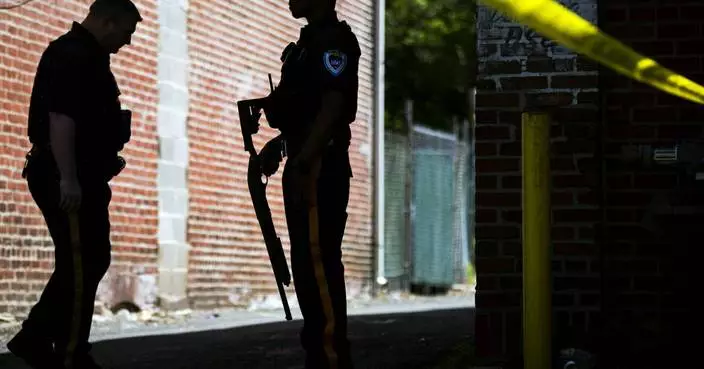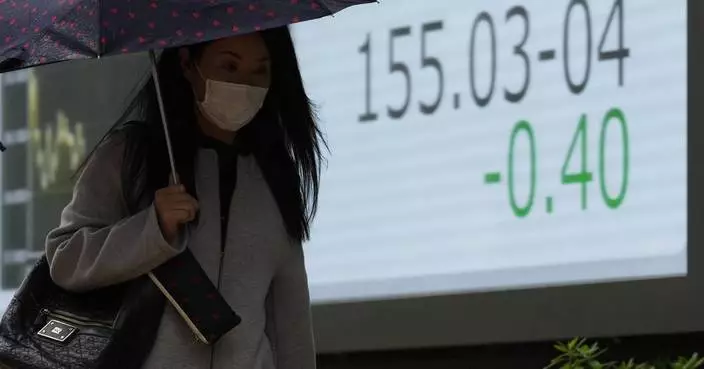NEW YORK (AP) — New York City police are searching for a man accused of stealing a gold-plated rose from a Manhattan church memorial honoring the victims of 9/11.
The metal flower had served as the centerpiece of a memorial at the Church of St. Francis of Assisi, whose long-time pastor, Father Mychal Judge, was crushed by falling rubble while praying for victims and rescuers on the morning of the attack.
On Wednesday afternoon, a man entered the historic Midtown church and removed the rose from the base of the memorial, according to a police spokesperson. Surveillance photographs show the suspect holding the tall and narrow piece of artwork on a sidewalk outside the church. He remained at large Thursday and was wanted for grand larceny, police said.
Father Brian Jordan, who leads the Franciscan church, said the man in the photos had been removed from the building previously for “bizarre behavior.”
“We’re grieved and saddened by this act of desecration,” he added. “We hope this troubled man turns himself to police and they in turn will send him to the nearest psychiatric facility so the healing process can begin.”
The memorial, which rests on a base of twisted steel leftover from the wreckage of the World Trade Center, arrived at the church 22 years ago, he said, through a donation coordinated by a local ironworkers union.
It was dedicated to the former pastor, Judge, as well as a parishioner, Carole LaPlante, who was also killed in the attacks.
Judge, a chaplain for the New York Fire Department who founded one of the first Catholic ministries devoted to those with HIV/AIDS, had been praying in the north tower’s lobby for rescuers and victims when he was killed by debris from the falling south tower.
Following his death, the priest’s admirers urged the Catholic Church to grant him sainthood, pointing to his efforts in pushing the church to be more welcoming to LGBTQ people.
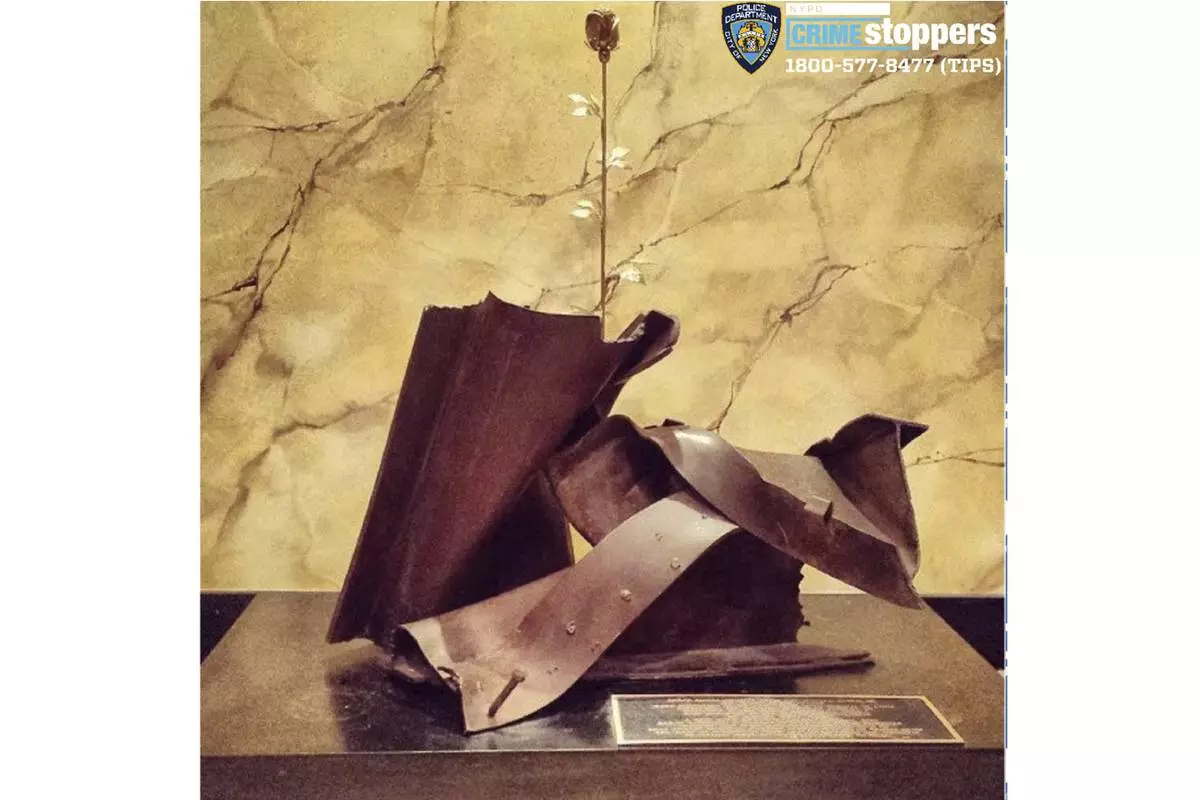
This image provided by the New York City Police Department shows a gold-plated metal rose that had served as the centerpiece of the Church of St. Francis of Assisi's memorial, rising from pieces of twisted steel taken from the wreckage of the World Trade Center, honoring the victims of 9/11, that was stolen Wednesday, Nov. 20, 2024, in New York. (New York City Police Department via AP)

This image from surveillance video provided by the New York City Police Department shows a man accused of stealing a gold-plated metal rose from the Church of St. Francis of Assisi memorial honoring the victims of 9/11, Wednesday, Nov. 20, 2024, in New York. (New York City Police Department via AP)
The Kremlin fired a new intermediate-range ballistic missile at Ukraine on Thursday in response to Kyiv's use this week of American and British missiles capable of striking deeper into Russia, President Vladimir Putin said.
In a televised address to the country, the Russian president warned that U.S. air defense systems would be powerless to stop the new missile, which he said flies at ten times the speed of sound and which he called the Oreshnik — Russian for hazelnut tree. He also said it could be used to attack any Ukrainian ally whose missiles are used to attack Russia.
“We believe that we have the right to use our weapons against military facilities of the countries that allow to use their weapons against our facilities,” Putin said in his first comments since President Joe Biden gave Ukraine the green light this month to use U.S. ATACMS missiles to strike at limited targets inside Russia.
Pentagon deputy press secretary Sabrina Singh confirmed that Russia’s missile was a new, experimental type of intermediate range missile based on it’s RS-26 Rubezh intercontinental ballistic missile.
“This was new type of lethal capability that was deployed on the battlefield, so that was certainly of concern," Singh said, noting that the U.S. was notified ahead of the launch through nuclear risk reduction channels.
The attack on the central Ukrainian city of Dnipro came in response to Kyiv's use of longer-range U.S. and British missiles in strikes Tuesday and Wednesday on southern Russia, Putin said. Those strikes caused a fire at an ammunition depot in Russia's Bryansk region and killed and wounded some security services personnel in the Kursk region, he said.
“In the event of an escalation of aggressive actions, we will respond decisively and in kind,” the Russian president said, adding that Western leaders who are hatching plans to use their forces against Moscow should “seriously think about this.”
Putin said the Oreshnik fired Thursday struck a well-known missile factory in Dnipro. He also said Russia would issue advance warnings if it launches more strikes with the Oreshnik against Ukraine to allow civilians to evacuate to safety — something Moscow hasn’t done before previous aerial attacks.
Kremlin spokesman Dmitry Peskov initially said Russia hadn’t warned the U.S. about the coming launch of the new missile, noting that it wasn't obligated to do so. But he later changed tack and said Moscow did issue a warning 30 minutes before the launch.
Putin's announcement came hours after Ukraine claimed that Russia had used an intercontinental ballistic missile in the Dnipro attack, which wounded two people and damaged an industrial facility and rehabilitation center for people with disabilities, according to local officials. But American officials said an initial U.S. assessment indicated the strike was carried out with an intermediate-range ballistic missile.
The attack comes during a week of escalating tensions, as the U.S. eased restrictions on Ukraine's use of American-made longer-range missiles inside Russia and Putin lowered the threshold for launching nuclear weapons.
The Ukrainian air force said in a statement that the Dnipro attack was launched from Russia’s Astrakhan region, on the Caspian Sea.
“Today, our crazy neighbor once again showed what he really is,” Ukrainian President Volodymyr Zelenskyy said hours before Putin's address. “And how afraid he is.”
Russia was sending a message by attacking Ukraine with an intermediate-range ballistic missile capable of releasing multiple warheads at extremely high speeds, even if they are less accurate than cruise missiles or short-range ballistic missiles, said Matthew Savill, director of military sciences at the Royal United Services Institute, a London-based think tank.
“Why might you use it therefore?” Savill said. "Signaling — signaling to the Ukrainians. We’ve got stuff that outrages you. But really signaling to the West ‘We’re happy to enter into a competition around intermediate range ballistic missiles. P.S.: These could be nuclear tipped. Do you really want to take that risk?’”
Military experts say that modern ICBMs and IRBMs are extremely difficult to intercept, although Ukraine has previously claimed to have stopped some other weapons that Russia described as “unstoppable,” including the air-launched Kinzhal hypersonic missile.
David Albright, of the Washington-based think tank the Institute for Science and International Security, said he was “skeptical” of Putin’s claim, adding that Russian technology sometimes “falls short.”
He suggested Putin was “taunting the West to try to shoot it down ... like a braggart boasting, taunting his enemy.”
Earlier this week, the Biden administration authorized Ukraine to use the U.S.-supplied, longer-range missiles to strike deeper inside Russia — a move that drew an angry response from Moscow.
Days later, Ukraine fired several of the missiles into Russia, according to the Kremlin. The same day, Putin signed a new doctrine that allows for a potential nuclear response even to a conventional attack on Russia by any nation that is supported by a nuclear power.
The doctrine is formulated broadly to avoid a firm commitment to use nuclear weapons. In response, Western countries, including the U.S., said Russia has used irresponsible nuclear rhetoric and behavior throughout the war to intimidate Ukraine and other nations.
They have also expressed dismay at the deployment of thousands of North Korean troops to Russia to fight against Ukraine.)
More than 1,000 days into war, Russia has the upper hand, with its larger army advancing in Donetsk and Ukrainian civilians suffering from relentless drone and missile strikes.
Analysts and observers say the loosening of restrictions on Ukraine's use of Western missiles is unlikely to change the the course of the war, but it puts the Russian army in a more vulnerable position and could complicate the logistics that are crucial in warfare.
Putin has also warned that the move would mean that Russia and NATO are at war.
“It is an important move and it pulls against, undermines the narrative that Putin had been trying to establish that it was fine for Russia to rain down Iranian drones and North Korean missiles on Ukraine but a reckless escalation for Ukraine to use Western-supplied weapons at legitimate targets in Russia,” said Peter Ricketts, a former U.K. national security adviser who now sits in the House of Lords.
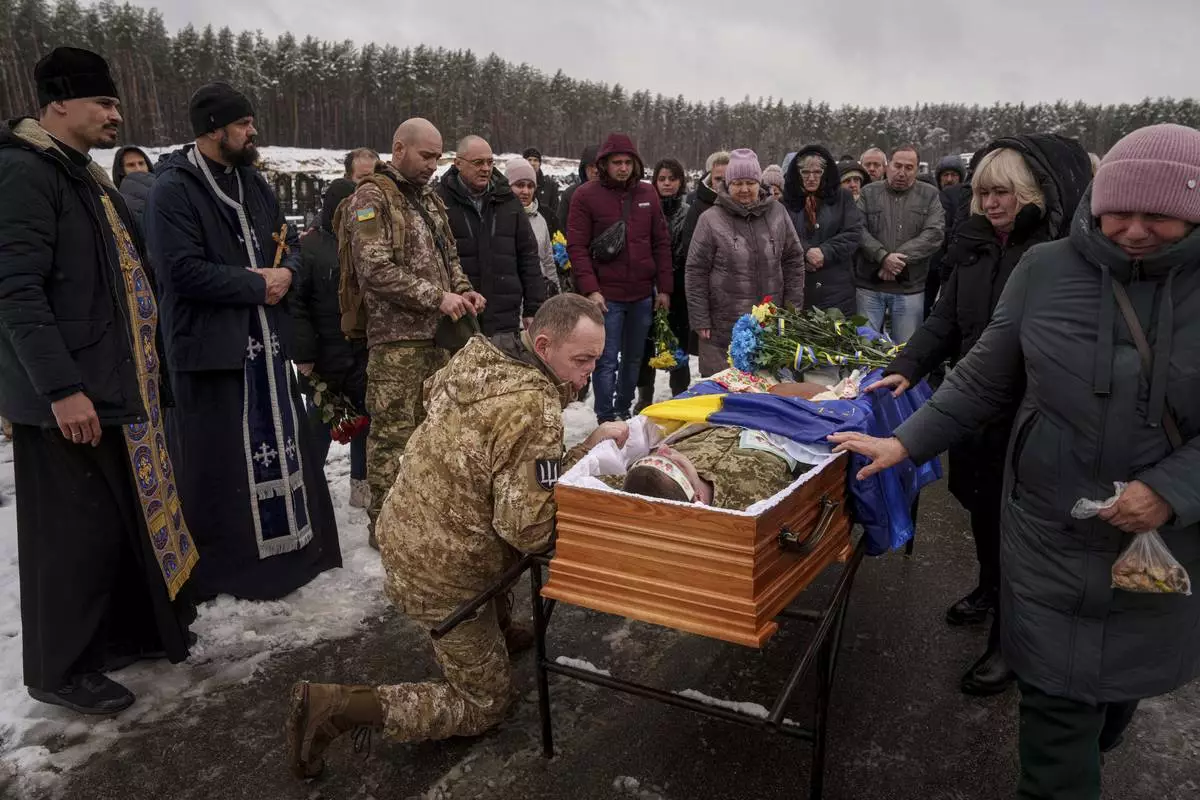
Ukrainian serviceman Roman bids farewell to his comrade of the 47th brigade Serhii Solovyov who was killed during fighting with Russian Forces in Kursk oblast on November 12, during the funeral ceremony in Irpin, Kyiv region, Ukraine, Nov. 21, 2024. (AP Photo/Evgeniy Maloletka)
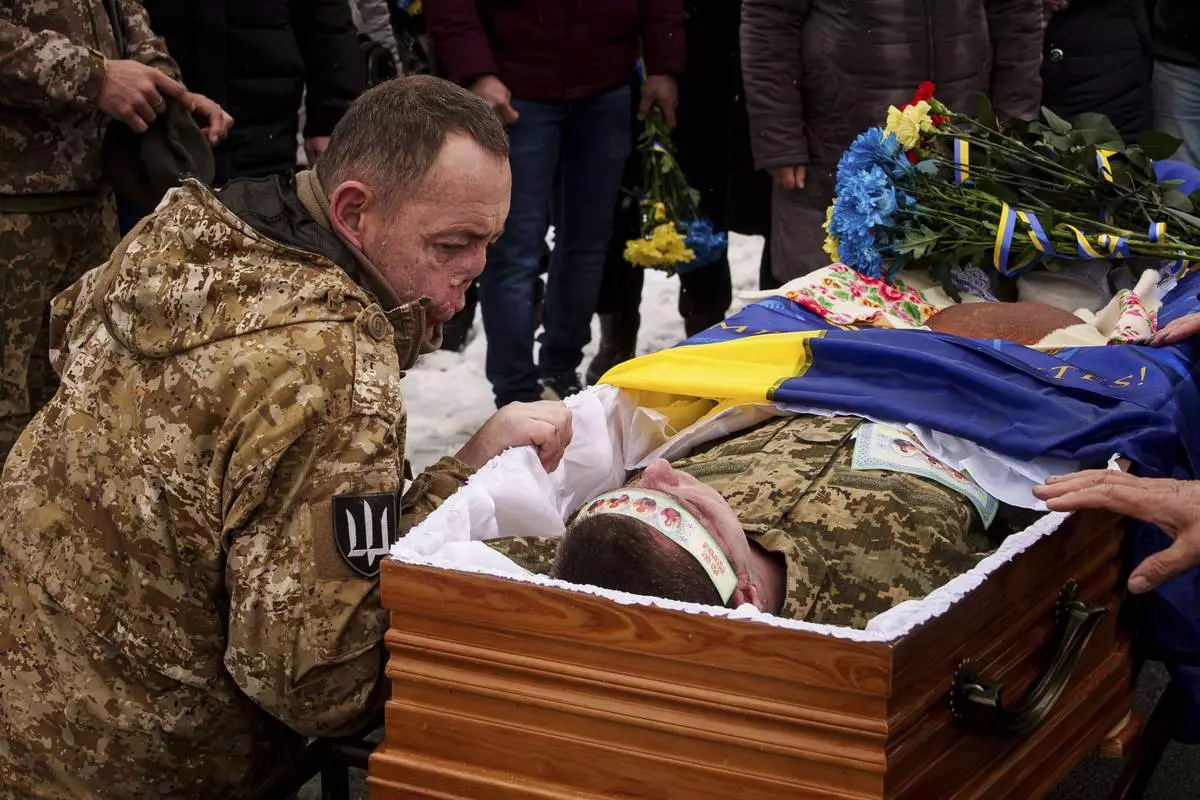
Ukrainian serviceman Roman bids farewell to his comrade of the 47th brigade Serhii Solovyov who was killed during fighting with Russian Forces in Kursk oblast on November 12, during the funeral ceremony in Irpin, Kyiv region, Ukraine, Nov. 21, 2024. (AP Photo/Evgeniy Maloletka)
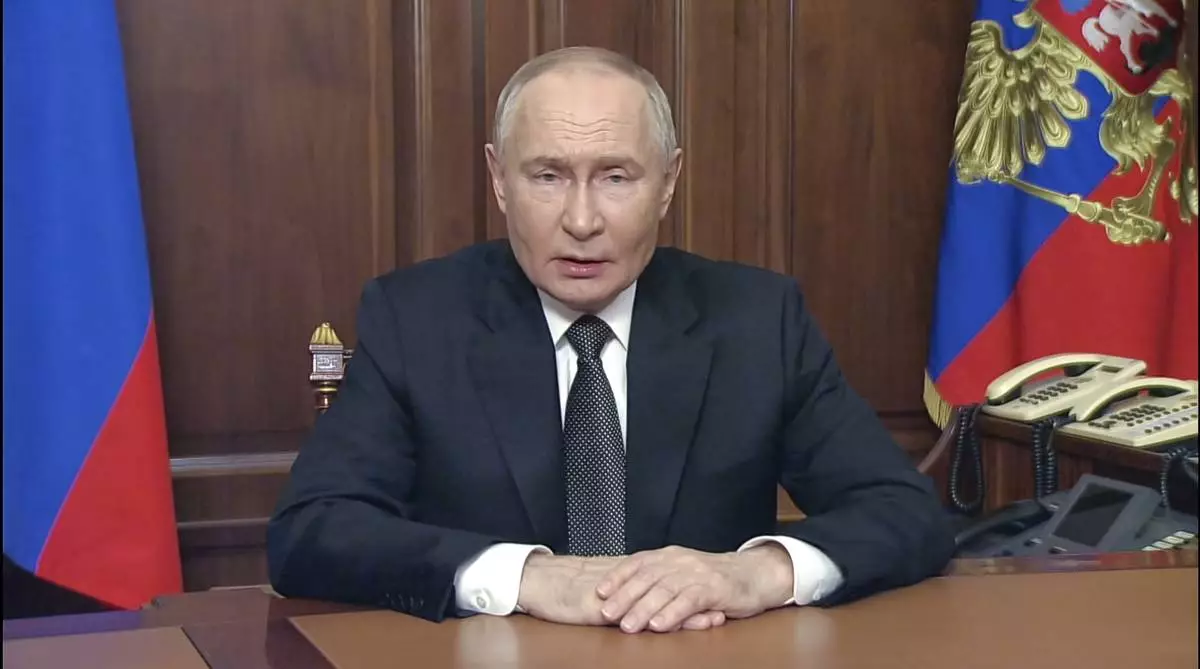
In this image made from video released by the Russian Presidential Press Service, Russian President Vladimir Putin addressees the nation at the Kremlin in Moscow, Russia, Thursday, Nov. 21, 2024. (Russian Presidential Press Service via AP)
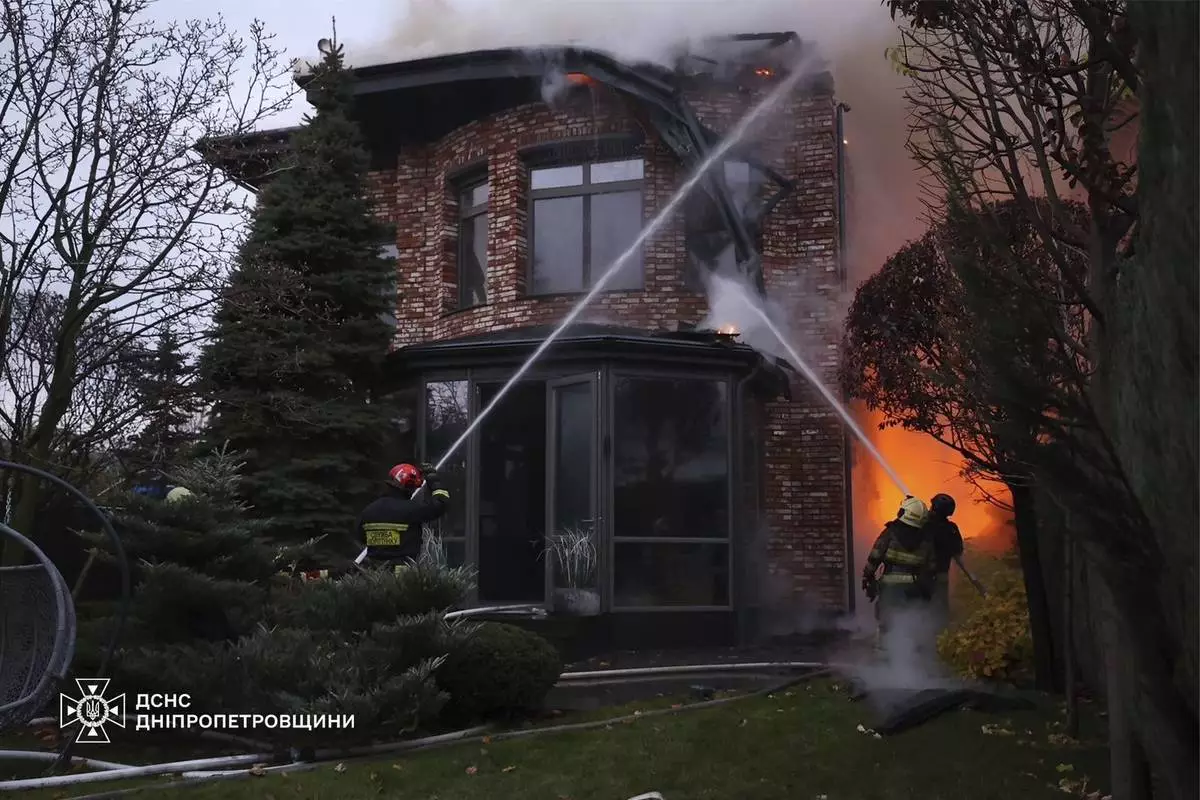
In this photo provided by the Ukrainian Emergency Services on Nov. 21, 2024, rescue workers put out a fire of a burning house damaged by a Russian strike on Dnipro, Ukraine. (Ukrainian Emergency Service via AP)
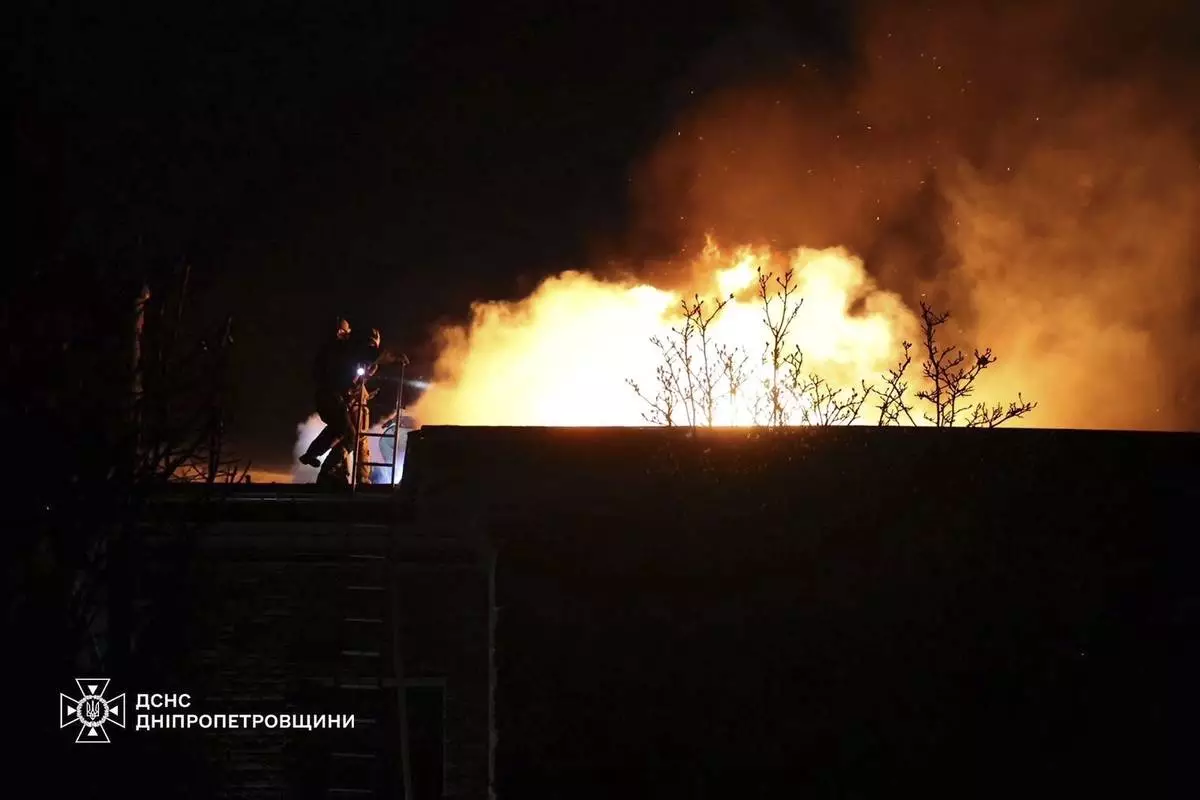
In this photo provided by the Ukrainian Emergency Services on Nov. 21, 2024, rescue workers put out a fire of a building which was heavily damaged by a Russian strike on Dnipro, Ukraine. (Ukrainian Emergency Service via AP)
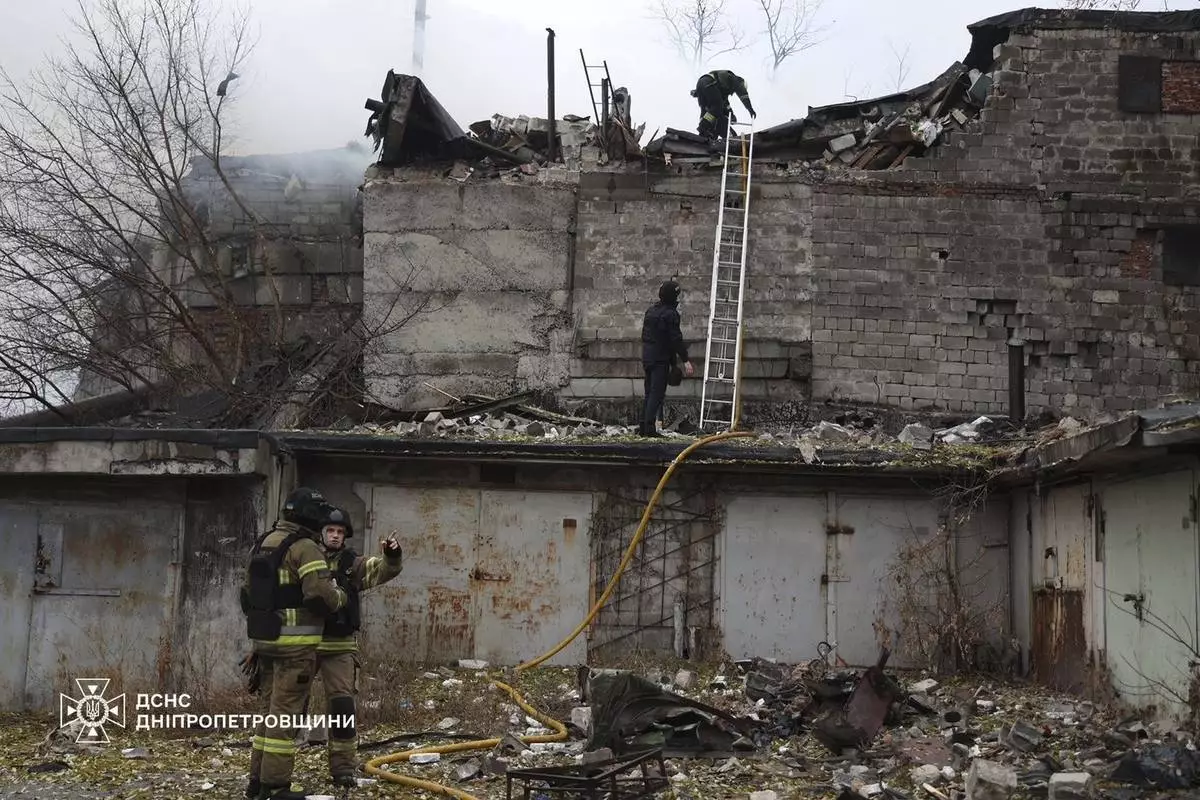
In this photo provided by the Ukrainian Emergency Services on Nov. 21, 2024, rescue workers put out a fire of a building which was heavily damaged by a Russian strike on Dnipro, Ukraine. (Ukrainian Emergency Service via AP)
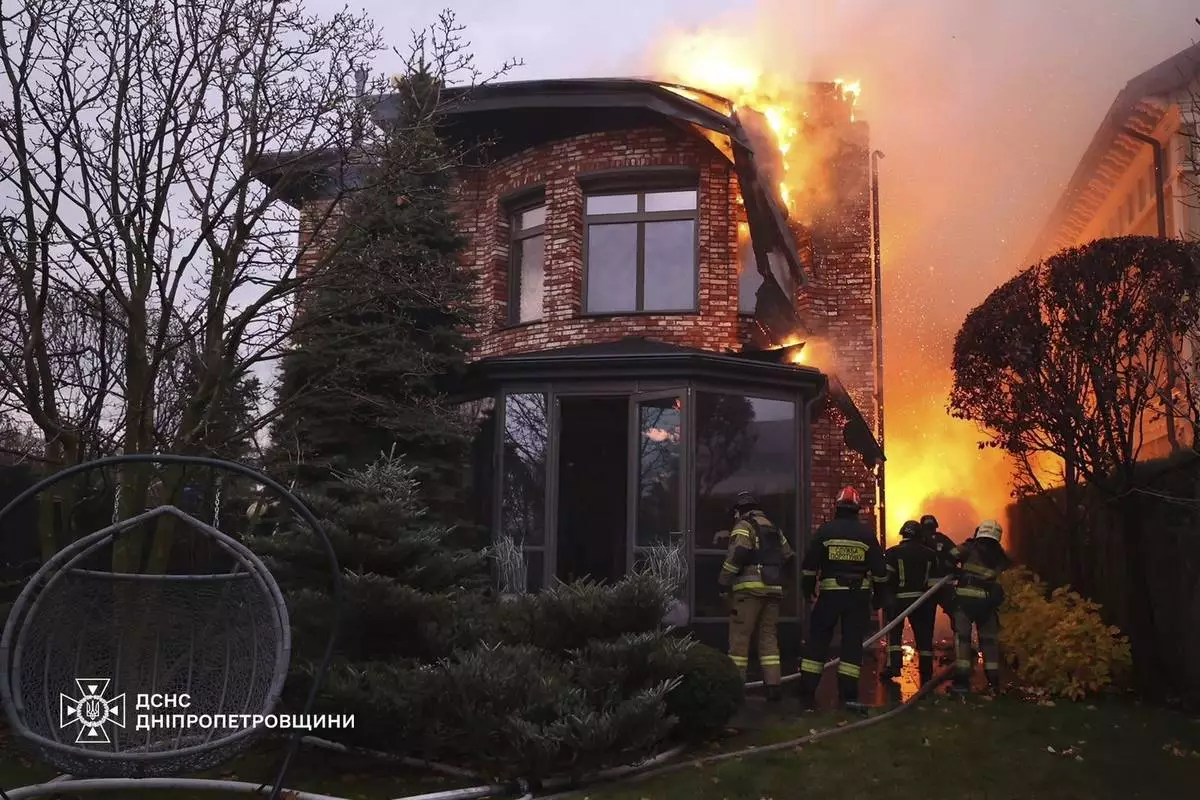
In this photo provided by the Ukrainian Emergency Services on Nov. 21, 2024, rescue workers put out a fire of a burning house damaged by a Russian strike on Dnipro, Ukraine. (Ukrainian Emergency Service via AP)
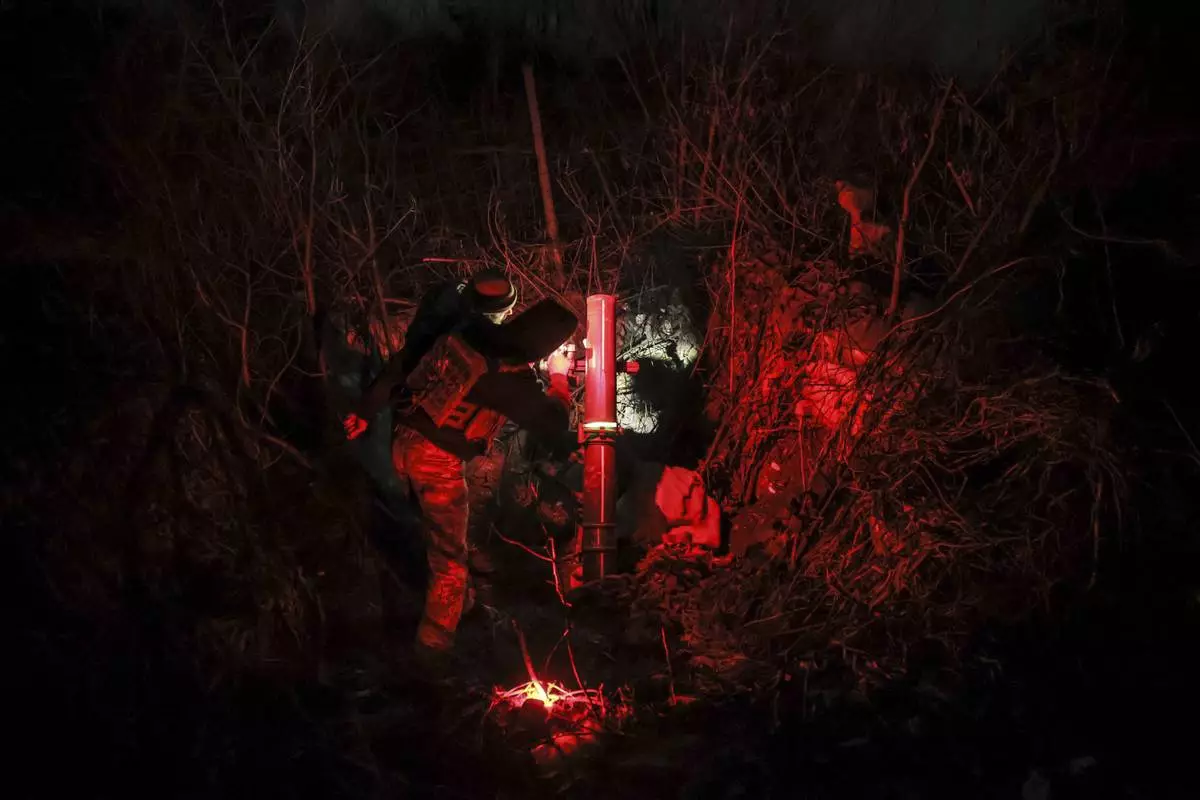
In this photo provided by Ukraine's 24th Mechanised Brigade press service, serviceman of the 24th Mechanised Brigade prepares to fire 120mm mortar towards Russian positions near Chasiv Yar town, in Donetsk region, Ukraine, Tuesday, Nov. 19, 2024. (Oleg Petrasiuk/Ukrainian 24th Mechanised Brigade via AP)
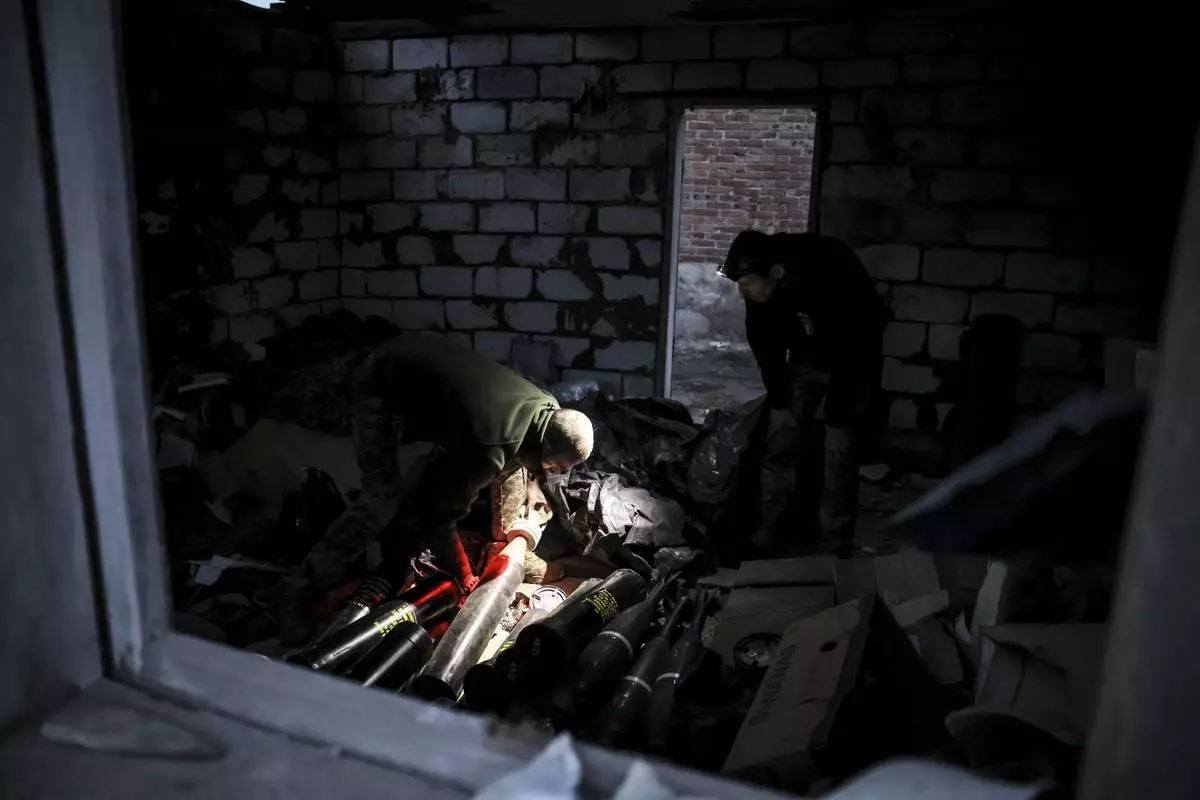
In this photo provided by Ukraine's 24th Mechanised Brigade press service, servicemen of the 24th Mechanised Brigade prepare to fire 120mm mortar towards Russian positions near Chasiv Yar town, in Donetsk region, Ukraine, Tuesday, Nov. 19, 2024. (Oleg Petrasiuk/Ukrainian 24th Mechanised Brigade via AP)

In this photo provided by Ukraine's 24th Mechanised Brigade press service, serviceman of the 24th Mechanised Brigade prepares to fire 120mm mortar towards Russian positions near Chasiv Yar town, in Donetsk region, Ukraine, Tuesday, Nov. 19, 2024. (Oleg Petrasiuk/Ukrainian 24th Mechanised Brigade via AP)

In this photo provided by Ukraine's 24th Mechanised Brigade press service, serviceman of the 24th Mechanised Brigade prepares to fire 120mm mortar towards Russian positions near Chasiv Yar town, in Donetsk region, Ukraine, Tuesday, Nov. 19, 2024. (Oleg Petrasiuk/Ukrainian 24th Mechanised Brigade via AP)
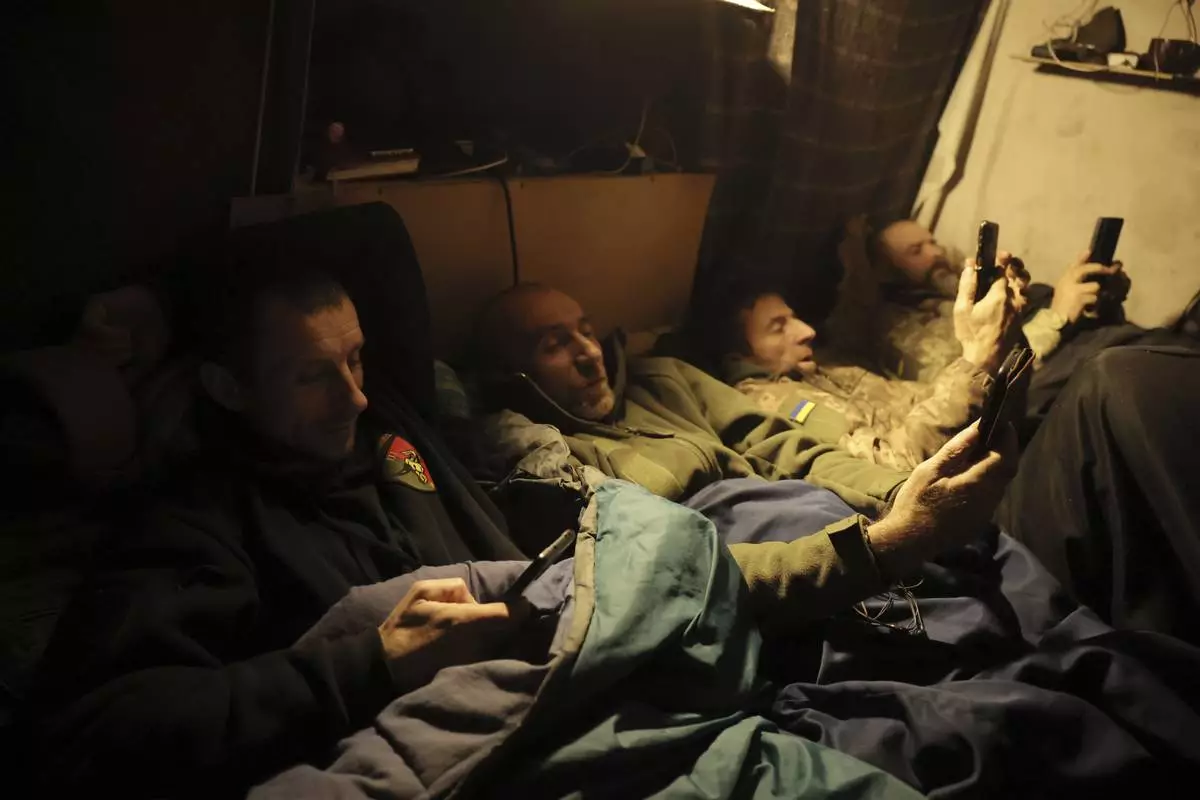
In this photo provided by Ukraine's 24th Mechanised Brigade press service, servicemen of the 24th Mechanised Brigade rest in a shelter on the front line near Chasiv Yar town, in Donetsk region, Ukraine, Tuesday, Nov. 19, 2024. (Oleg Petrasiuk/Ukrainian 24th Mechanised Brigade via AP)

In this photo provided by Ukraine's 24th Mechanised Brigade press service, a serviceman of the 24th Mechanised Brigade rests in a shelter on the front line near Chasiv Yar town, in Donetsk region, Ukraine, Tuesday, Nov. 19, 2024. (Oleg Petrasiuk/Ukrainian 24th Mechanised Brigade via AP)
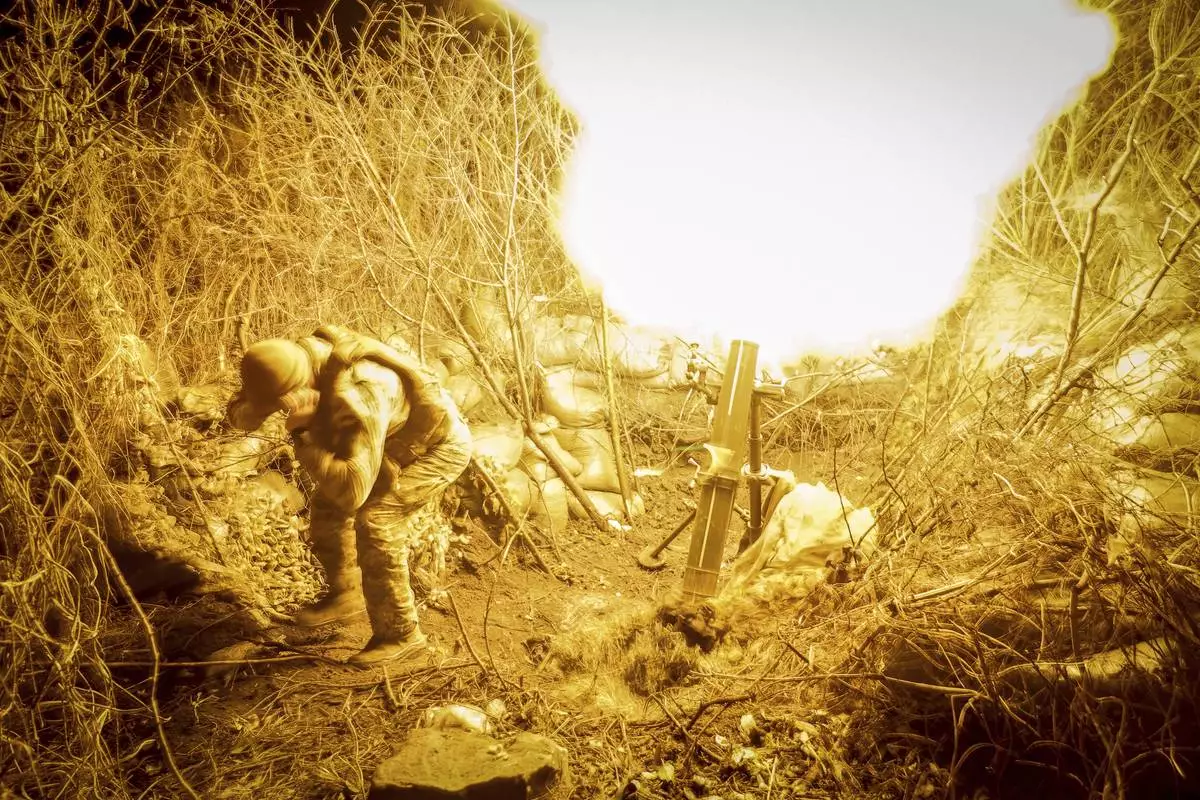
In this photo provided by Ukraine's 24th Mechanised Brigade press service, servicemen of the 24th Mechanised Brigade fire 120mm mortar towards Russian positions near Chasiv Yar town, in Donetsk region, Ukraine, Tuesday, Nov. 19, 2024. (Oleg Petrasiuk/Ukrainian 24th Mechanised Brigade via AP)



















